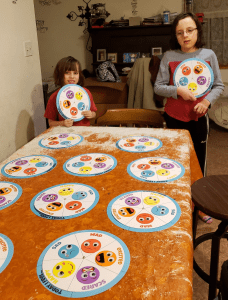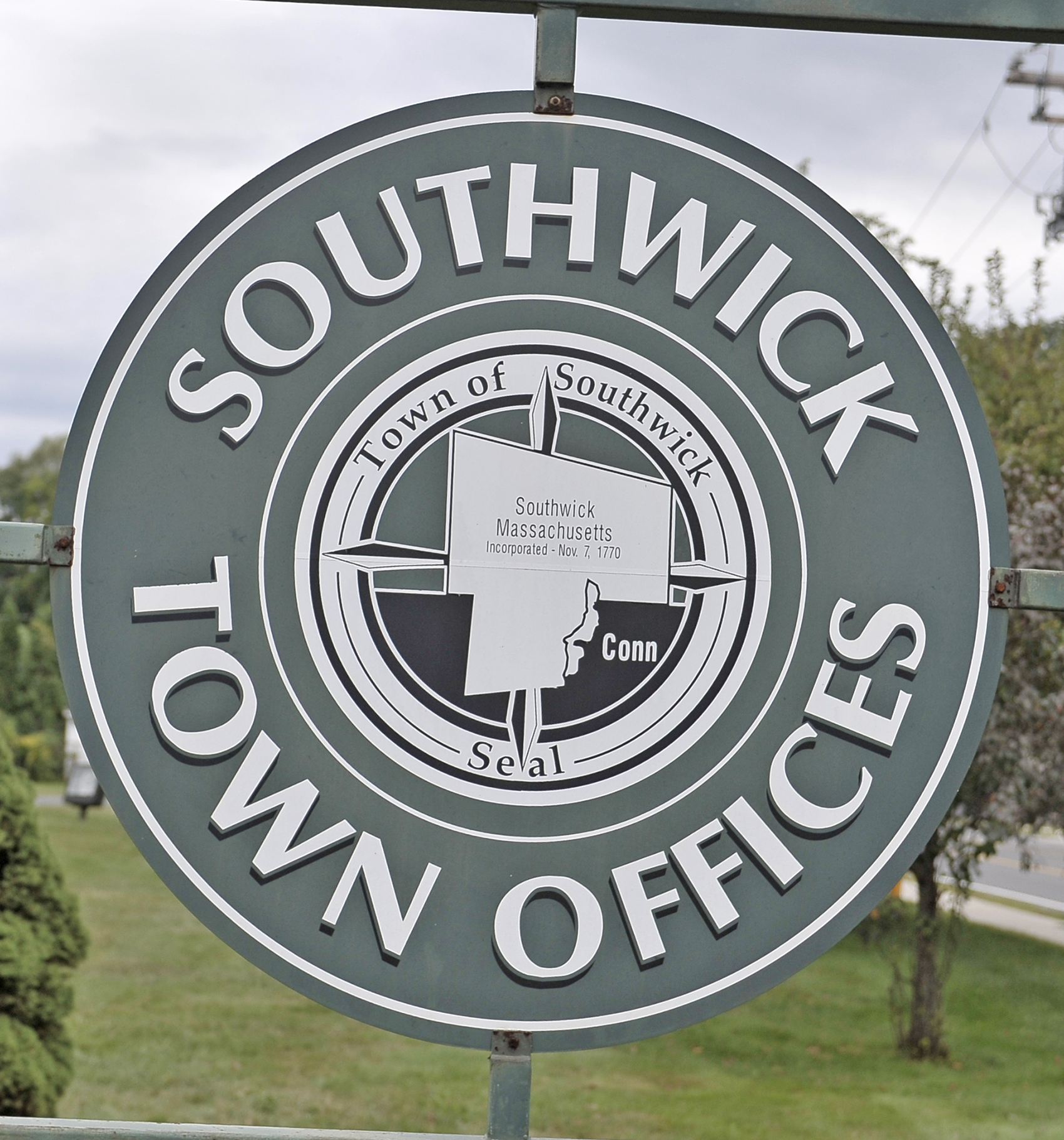SOUTHWICK-Erik and Jo-Ann Davidson have found the “sensory sacks” they created for area law enforcement and fire departments, as well as Emergency Medical Services, have been welcomed and as word has spread about the endeavor, requests are increasing from towns and cities across the state.
“Our sensory sacks have really taken off,” said Erik Davidson, who is founder along with his wife of the Start Em Early Foundation. “We are almost 30 sensory sacks backlogged.”
The couple started a Go Fund Me page earlier this year to bring to light the project of autism awareness to first responders. At press time, $385 has been raised toward a $1,000 goal.
“We set a reasonable goal of $1,000 not realizing how many departments would be interested and how that would affect the amount we wanted to raise,” said Jo-Ann Davidson.

Sisters Grayson and Janelle Davidson hold “feelings wheels” that are part of a “sensory sack” for first responders. The project is sponsored by the Start Em Early Foundation, based in Southwick. (JOANN DAVIDSON PHOTO)
Towns that have already received sensory sacks include Southwick, Turners Falls, Northfield, Easthampton, Becket, Shelburne Falls, Sheffield, Colrain, Greenfield, Rowe, Charlemont, as well as the Southern Berkshire Ambulance Department, South County EMS in Deerfield, and Rescue Inc., of Brattleboro, Vt.
“Having these sensory sacks in our ambulances gives us one more tool to help in a time of crisis,” said Southwick Fire Chief Russ Anderson. “Needing an ambulance or medical services is a stressful time for anyone – now imagine it through the eyes of a child with sensory concerns. These tools will help make a tough day a little better.”
Erik Davidson, a paramedic with Northfield EMS, noted that given the current pandemic, the “biggest challenge” is the personal protective equipment (PPE) they wear when responding to a call for someone who is sensory challenged.
“It can be scary and intimidating to someone with very little interaction or experience to these types of situations,” he said. “The changes to ‘normal routines’ also is challenging at this time.”
Davidson added that sensory challenged individuals “thrive” on knowing what to expect.
“When that order is out of place, it adds anxiety to an already stressful situation,” he added.
Jo-Ann Davidson, a special education teacher in the Chicopee schools, shared a similar sentiment.
“My students all have some sort of sensory challenge, whether it is related to how they interact with other people or react to the environment around them,” she said. “When deciding what to place in the sacks, I went with what worked with my students. I also went with what works with my daughter who has sensory challenges of her own related to loud noises and meeting new people.”
“For first responders, it is more related to having a ‘sensory overload’ during an emergency and interacting with those we are trying to assist,” Erik Davidson said. “I use the sack contents with any patient that may need ‘a little something more’ in order to provide the best possible services to ensure a positive outcome.”
He added that EMS needs sensory sacks more often because of the nature of the calls they respond to – medical or traumatic. “Fire and police are also in need of strategies to interact with sensory challenged individuals due to the varied situations they are called to.”
Each sensory sack contains a list of contents that explains each item and how it could be used effectively. Supplies range from noise canceling head phones, a Rubik’s Cube to keep a person’s hands busy, and weighted animals that can be calming, to a “feelings wheel” which can help direct someone to explain how much pain is being experienced, and a white board and marker to share information. Additionally, supplies include a coloring book and crayons, a shiny necklace as a fidgeting tool, a stress ball to squeeze or bounce, and Play-Doh which can also having a calming effect.
“Our daughter Janelle assists us with putting the sacks together, organizing the materials and ‘testing’ the contents,” said Jo-Ann Davidson. “Due to her unique needs, she often leaves the explanation of the sacks to her sister, Grayson.”
The couple, who also have a tutorial on YouTube (https://youtu.be/XlusHFQE5yE) on how to use the items in the sensory sack, recently received 501 (c) (3) approval which will allow them to receive donations from corporations and foundations.
For persons who would like to help the foundation reach its $1,000 goal, donations can be mailed to Start Em Early Foundation c/o, 26 Point Grove Road, Southwick MA 01077.
Ways to also contribute to the sensory sack endeavor include visiting the Go Fund Me page at gofundme.com and search for “Sensory Sacks, Start Em Early Foundation.”
Also, persons can purchase items through the foundation’s Amazon “wish list” link – https://www.amazon.com/hz/wishlist/ls/TM53JIYSCNUV?ref_=wl_share&fbclid=IwAR17LxkG7QOjKkB1-oqJWFr71o4R4_MKMxZFTKDYIavC2RwX3PexS5Ee3K8.
“We are looking to provide any department with sensory sacks, whether they be EMS, law enforcement, or fire departments,” said Erik Davidson. “Our ultimate dream is to provide every department in the state with a sensory sack.”







